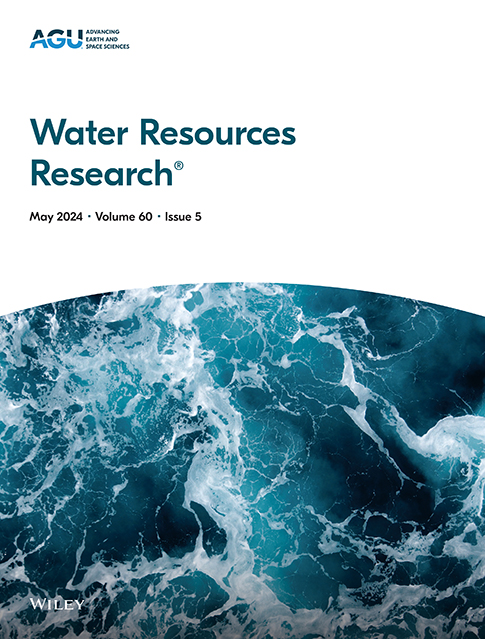Predicting the Evolution of Extreme Water Levels With Long Short-Term Memory Station-Based Approximated Models and Transfer Learning Techniques
IF 4.6
1区 地球科学
Q2 ENVIRONMENTAL SCIENCES
引用次数: 0
Abstract
Extreme water levels (EWLs) resulting from cyclones pose significant flood hazards and risks to coastal communities and interconnected ecosystems. To date, physically based models have enabled accurate prediction of EWLs despite their inherent high computational cost. However, the applicability of these models is limited to data-rich sites with diverse characteristics. The dependence on high quality spatiotemporal data, which is often computationally expensive, hinders the applicability of these models to regions of either limited or data-scarce conditions. To address this challenge, we present a Long Short-Term Memory (LSTM) network framework to predict the evolution of EWLs beyond site-specific training stations. The framework, named LSTM-Station Approximated Models (LSTM-SAM), consists of a collection of bidirectional LSTM models enhanced with a custom attention mechanism layer embedded in the architecture. LSTM-SAM incorporates a transfer learning approach applicable to target (tide-gage) stations along the U.S. Atlantic Coast. Importantly, LSTM-SAM helps analyze: (a) the underlying limitations associated with transfer learning, (b) evaluate EWL predictions beyond training domains, and (c) capture the evolution of EWL caused by tropical and extratropical cyclones. The framework demonstrates satisfactory performance with “transferable” models achieving Kling-Gupta Efficiency (KGE), Nash-Sutcliffe Efficiency (NSE), and Root-Mean Square Error (RMSE) ranging from 0.78 to 0.92, 0.90 to 0.97, and 0.09–0.18 m at the target stations, respectively. We show that LSTM-SAM can accurately predict not only EWLs but also their evolution over time, that is, onset, peak, and dissipation, which could assist in operational flood forecasting in regions with limited resources to set up physically based models.基于长短期记忆站近似模型和迁移学习技术的极端水位演变预测
飓风造成的极端水位(ewl)对沿海社区和相互关联的生态系统构成重大洪水灾害和风险。迄今为止,基于物理的模型能够准确预测ewl,尽管其固有的高计算成本。然而,这些模型的适用性仅限于具有不同特征的数据丰富的站点。对高质量时空数据的依赖往往在计算上很昂贵,阻碍了这些模型在有限或数据稀缺条件下的适用性。为了解决这一挑战,我们提出了一个长短期记忆(LSTM)网络框架来预测特定地点训练站之外的ewl演变。该框架名为LSTM-站点近似模型(LSTM- sam),由一组双向LSTM模型组成,该模型通过嵌入在体系结构中的自定义关注机制层得到增强。LSTM-SAM结合了一种迁移学习方法,适用于美国大西洋沿岸的目标(潮汐计)站。重要的是,LSTM-SAM有助于分析:(a)与迁移学习相关的潜在局限性,(b)评估训练域之外的EWL预测,以及(c)捕获热带和温带气旋引起的EWL演变。该框架具有令人满意的“可转移”模型,在目标站点分别实现了克林-古普塔效率(KGE)、纳什-苏特克利夫效率(NSE)和均方根误差(RMSE),范围分别为0.78 ~ 0.92、0.90 ~ 0.97和0.09 ~ 0.18 m。研究表明,LSTM-SAM不仅可以准确预测ewl的发生、峰值和消散,还可以准确预测ewl随时间的演变,这有助于在资源有限的地区建立基于物理的洪水预报模型。
本文章由计算机程序翻译,如有差异,请以英文原文为准。
求助全文
约1分钟内获得全文
求助全文
来源期刊

Water Resources Research
环境科学-湖沼学
CiteScore
8.80
自引率
13.00%
发文量
599
审稿时长
3.5 months
期刊介绍:
Water Resources Research (WRR) is an interdisciplinary journal that focuses on hydrology and water resources. It publishes original research in the natural and social sciences of water. It emphasizes the role of water in the Earth system, including physical, chemical, biological, and ecological processes in water resources research and management, including social, policy, and public health implications. It encompasses observational, experimental, theoretical, analytical, numerical, and data-driven approaches that advance the science of water and its management. Submissions are evaluated for their novelty, accuracy, significance, and broader implications of the findings.
 求助内容:
求助内容: 应助结果提醒方式:
应助结果提醒方式:


